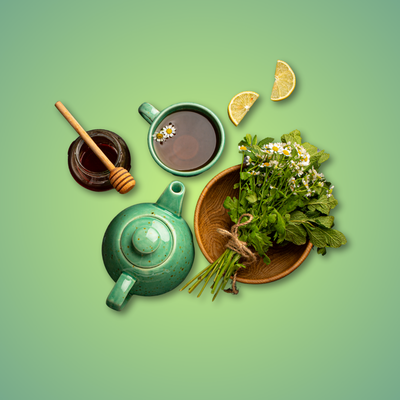There's something undeniably comforting about a warm mug of tea, and when that tea is infused with the sweet and spicy aroma of cinnamon, the experience becomes even more special. Whether seeking a soothing bedtime ritual, a flavorful accompaniment to the afternoon, or a natural way to support well-being, cinnamon tea offers a delightful and potentially beneficial option. This exploration delves into the fascinating world of cinnamon tea, examining its diverse types, remarkable health benefits, rich history, and countless ways to enjoy it.
The Spice Rack Unveiled: Exploring the Types of Cinnamon for Your Tea
While one might simply reach for the "cinnamon" in the spice cabinet, there are several distinct types of cinnamon, each possessing a unique flavor profile and origin. Understanding these differences can significantly enhance the cinnamon tea experience.
- Ceylon Cinnamon (Cinnamomum verum): The "True Cinnamon"
- Primarily sourced from the island of Sri Lanka (formerly Ceylon) [1], with smaller cultivations in regions of Southern India and Madagascar [7], Ceylon cinnamon is often recognized as "true cinnamon." Its flavor is characterized by its delicacy and subtle sweetness, accompanied by pleasing citrusy and floral notes [1]. In terms of appearance, it exhibits a light brown hue and a thin, brittle bark that forms multiple layers, resembling slender quills [4]. Often regarded as a higher-quality variety, Ceylon cinnamon typically commands a higher price [2]. Notably, it contains very low levels of coumarin, a compound that will be discussed later, making it a safer choice for regular consumption [3]. The meticulous harvesting process, involving careful hand-peeling of thin inner bark layers, contributes to its premium quality [7].
- Cassia Cinnamon (Cinnamomum cassia): The Bold and Spicy Choice
- More prevalent in kitchens globally, particularly in North America [1], Cassia cinnamon is mainly cultivated in China and Indonesia [1]. It offers a significantly bolder and spicier flavor, sometimes accompanied by a slightly bitter undertone [1]. Its visual characteristics include a reddish-brown to darker brown color and a thicker, coarser bark, frequently appearing as a single, thick rolled layer [1]. While extensively used in culinary applications, it is advisable to be mindful of its higher coumarin content and consume it in moderation [3]. This variety is often less expensive to produce and import, contributing to its widespread use [8].
- Saigon Cinnamon (Cinnamomum loureiroi): The Potent Vietnamese Variety
- Originating from Vietnam [1], Saigon cinnamon, also known as Vietnamese cassia [14], is distinguished by its exceptionally strong, sweet, and spicy flavor and aroma [1]. Some describe its taste as having a fiery edge [16]. This intensity stems from its high concentration of cinnamaldehyde, the primary compound responsible for cinnamon's characteristic taste and smell [15]. Similar to Cassia, Saigon cinnamon also has a high coumarin content [15]. Its robust flavor makes it a popular ingredient in dishes such as Vietnamese pho [16]. Despite its name suggesting a connection to Saigon (Ho Chi Minh City), much of the Saigon cinnamon used in tea blends actually comes from forests outside Hanoi [18].
- Korintje Cinnamon (Cinnamomum burmannii): The Sweet Indonesian Favorite
- Hailing from the island of Sumatra in Indonesia [1], Korintje cinnamon, also known as Indonesian cinnamon or Padang Cassia [23], is a sweet and warm variety with subtle hints of citrus and floral undertones [20]. Some describe its flavor as woody and smooth, with notes of clove and pepper [24]. The quills typically exhibit a reddish-brown hue, are thin, and are often rolled into multiple layers [21]. This type of cinnamon is commonly found on the shelves of American supermarkets [22]. While it possesses a lower essential oil content compared to Saigon cinnamon, it still offers a substantial "cinnamon-y" flavor [10] and contains lower levels of coumarin compared to other cassia varieties [23]. The name "Korintje" is derived from the Dutch translation of "Kerinci," a regency in Sumatra where it is cultivated, reflecting the historical Dutch colonial influence on spice cultivation in Indonesia [22].
|
Type of Cinnamon |
Origin |
Flavor Profile |
Appearance |
Coumarin Content (Relative) |
|
Ceylon |
Sri Lanka |
Delicate, sweet, citrusy, floral |
Thin, brittle, multiple-layered quills |
Low |
|
Cassia |
China, Indonesia |
Strong, spicy, slightly bitter |
Thick, coarse, single-layered roll |
High |
|
Saigon |
Vietnam |
Very strong, sweet, spicy, fiery |
Thick, hard sticks |
High |
|
Korintje |
Indonesia |
Sweet, warm, citrusy, floral, woody |
Thin, reddish-brown, multiple-layered quills |
Medium |
Steeping in Wellness: Unpacking the Health Benefits of Cinnamon Tea
Beyond its appealing taste and aroma, cinnamon tea has been linked to a range of potential health benefits, making it more than just a comforting drink.
- Blood Sugar Control: A Sweet Ally?
- Numerous studies suggest that cinnamon may contribute to the regulation of blood sugar levels [25]. Research indicates that cinnamon can enhance the body's sensitivity to insulin, thereby improving the efficiency with which cells utilize insulin to transport sugar from the bloodstream into the cells [26]. Furthermore, it may help to slow down the process of digestion and the subsequent absorption of carbohydrates, leading to a more gradual increase in blood sugar levels following meals [26]. Some studies have even demonstrated that cinnamon can lower serum lipids, blood glucose levels, and fasting plasma glucose in individuals diagnosed with type 2 diabetes [25]. One study specifically found that the administration of cinnamon tea made from Korintje cinnamon (C. burmannii) resulted in a slight decrease in postprandial blood glucose levels in non-diabetic adults [31]. It is theorized that certain compounds present in cinnamon may even mimic the actions of insulin within the body [26].
- Inflammation Reduction: Soothing from Within
- Cinnamon is widely recognized for its significant anti-inflammatory properties [32]. Key compounds within cinnamon, such as cinnamaldehyde and eugenol, are believed to play a crucial role in these effects [32]. By assisting in the reduction of inflammation markers within the body, regular consumption of cinnamon tea may contribute to lowering the risk of chronic diseases that are often associated with prolonged inflammation [25]. Some research even suggests that cinnamon could offer benefits in managing age-related inflammatory conditions, such as arthritis [32].
- Antioxidant Powerhouse: Fighting Free Radicals
- Cinnamon stands out as a rich source of polyphenol antioxidants [32]. These potent compounds help to protect the body from damage caused by free radicals, which are unstable molecules that can contribute to the aging process and the development of various chronic diseases [32]. Studies have demonstrated that cinnamon tea can effectively increase the total antioxidant capacity within the body [27]. When its antioxidant activity is compared to that of other spices, cinnamon consistently ranks among the top contenders [27].
- Other Potential Benefits: Beyond its effects on blood sugar, inflammation, and antioxidant levels, research suggests that cinnamon tea may offer additional advantages. These include supporting heart health by potentially lowering blood pressure and cholesterol levels [32], promoting brain function by potentially enhancing cognition and memory [32], and providing relief from menstrual pain and discomfort [32]. Cinnamon also exhibits antibacterial and antifungal properties, potentially aiding in the defense against infections [32].
Aromatic History: Cinnamon's Journey Through Time and Cultures
Cinnamon boasts a rich and captivating history, having been highly valued for its aroma and medicinal properties for thousands of years.
- Ancient Origins: A Spice Fit for Kings (and Mummies)
- The history of cinnamon dates back to ancient times, with records indicating its importation to Egypt as early as 2000 BC [34]. The ancient Egyptians held it in such high esteem that they incorporated it into their elaborate embalming processes and religious ceremonies [34]. It was regarded as a precious commodity, a gift suitable for monarchs and even deities [34]. In ancient China, cinnamon served not only as a culinary spice but also as an important component of traditional medicine [41].
- The Spice Trade: Wars and Fortunes Built on Cinnamon
- Cinnamon is recognized as one of the earliest spices to be traded in the ancient world [36]. For centuries, its origin remained a closely guarded secret, contributing to its immense value and desirability [34]. The pursuit of cinnamon played a significant role in shaping global trade routes and even prompted European exploration [35]. Control over the cinnamon plantations in Ceylon (now Sri Lanka) became a major point of contention and conflict among prominent European powers, including the Portuguese, Dutch, and English [35]. At certain times in history, this fragrant spice was even considered to be of greater value than gold [37].
- Cultural Traditions: Cinnamon in Beverages Across the Globe
- Cinnamon has a long-standing tradition of being used in beverages across various cultures. In ancient Rome, it was employed to flavor wines [38], and cinnamon wine was also enjoyed in ancient China [41]. Today, cinnamon remains a cherished ingredient in traditional drinks. In Mexico, Té de Canela (Mexican Cinnamon Tea) is a comforting beverage often used as a holistic remedy [43]. Horchata, a sweet and milky drink popular in Mexico and Latin America, is frequently flavored with cinnamon [32]. In the Levant region, a warm and comforting cinnamon drink known as "Iner" or "Qirfeh bil goz" is traditionally served during the colder months and to celebrate the birth of a child [46]. Even in the Mediterranean, a refreshing cinnamon beverage called "Canelada" is enjoyed in Crete and the Aegean islands [48].
Brewing Your Perfect Cup: Cinnamon Tea Recipes and Methods
Preparing cinnamon tea at home is a straightforward process that allows for customization of the flavor intensity.
- Simple Cinnamon Stick Tea: The most basic method involves steeping a cinnamon stick in hot water. Simply bring water to a boil, pour it over a cinnamon stick in a mug, and allow it to steep for 5 to 10 minutes, or longer for a more pronounced flavor. The longer the cinnamon stick steeps, the more intense the resulting flavor will be. Experimenting with different steeping durations can help in discovering the preferred strength.
- Using Ground Cinnamon: Cinnamon tea can also be made using ground cinnamon. Boil water and add ½ to 1 teaspoon of ground cinnamon per cup. Stir the mixture well and let it steep for just 2 to 3 minutes. It is important to note that ground cinnamon does not fully dissolve and may leave some sediment at the bottom of the cup, making straining a potentially desirable step. For richer cinnamon infusions, particularly in tea lattes, using crushed cinnamon bark or cinnamon sticks is often preferred over ground powder, as they tend to produce a smoother consistency [9].
- Steeping Time Variations: As previously mentioned, the duration of steeping significantly influences the flavor intensity. It is advisable to start with a shorter steeping time, taste the tea, and then steep it for a longer period if a more potent cinnamon flavor is desired.
- Iced Cinnamon Tea: A Refreshing Twist: Cinnamon tea is not limited to warm consumption. It can be brewed in the standard manner, allowed to cool completely, and then poured over ice for a refreshing and flavorful iced beverage. A touch of sweetener can be added, or it can be combined with other iced tea variations for a unique and personalized drink.
- Recipe Ideas:
- Cinnamon Ginger Tea: For an added layer of warmth and spice, a few slices of fresh ginger can be placed in the mug along with the cinnamon stick during steeping [9]. A drizzle of honey and a small piece of dried orange peel can further enhance the overall flavor profile [9].
- Spiced Cinnamon Chai: To create a homemade chai, a cinnamon stick can be combined with other warming spices such as cardamom pods, cloves, and ginger root [9]. A base of black tea leaves can be used for a caffeinated version, or rooibos tea can serve as a caffeine-free alternative [9]. Adding milk or a plant-based alternative and sweetening with honey will result in a traditional chai experience.
Perfectly Paired: Enhancing Your Cinnamon Tea Experience
The naturally sweet and spicy notes of cinnamon tea harmonize beautifully with a variety of other flavors.
- Sweeteners: The sweetness of cinnamon tea can be enhanced with a drizzle of honey [9], maple syrup, a spoonful of sugar, or a touch of agave nectar. The choice of sweetener can subtly alter the overall flavor profile of the tea.
- Citrus Zest: The addition of a twist of lemon or orange peel [9] can introduce a bright and zesty element that complements the inherent warmth of cinnamon.
- Warming Spices: For an even cozier and more complex flavor profile, consider incorporating other warming spices such as fresh ginger [9], cloves [9], cardamom [9], or a pinch of nutmeg.
- Creamy Additions: The addition of milk, whether dairy or a plant-based alternative like almond, oat, or cashew milk [9], can create a smoother, richer, and more comforting beverage, akin to a latte.
- Other Ideas: A drop of vanilla extract or a tiny pinch of salt can also be used to subtly enhance the various flavors present in cinnamon tea.
Sip with Caution: Potential Side Effects and Precautions
While cinnamon tea offers numerous potential benefits, it is important to be aware of potential side effects and to take necessary precautions.
- Coumarin Content: Cassia cinnamon varieties, which include Cassia, Saigon, and Korintje, contain higher levels of a naturally occurring compound called coumarin [3]. In high doses, coumarin has the potential to cause liver damage. Ceylon cinnamon, conversely, contains very low levels of coumarin and is considered a safer option for regular consumption [3]. It is generally recommended that adults limit their intake of Cassia cinnamon to no more than one teaspoon per day [25].
- Medication Interactions: The coumarin present in cinnamon may possess anticoagulant properties and could potentially interact with blood-thinning medications [5]. Furthermore, cinnamon may have an effect on blood sugar levels and could therefore interact with medications used to manage diabetes.
- Pregnancy Considerations: While cinnamon is often used in small quantities in cooking, individuals who are pregnant should consult their healthcare provider before regularly consuming cinnamon tea, as high doses may have certain effects [29].
- Other Potential Side Effects: In rare instances, some individuals may experience allergic reactions or mild digestive discomfort following the consumption of cinnamon.
Beyond the Brew: Interesting Facts and Cinnamon Tea Trivia
Cinnamon's journey through history and its unique properties have given rise to some intriguing facts and trivia.
- Fun Facts: The botanical name for cinnamon, Cinnamomum, has its origins in the Hebraic and Arabic word "amomon," which translates to "fragrant spice plant" [36]. In ancient Egypt, cinnamon was so highly prized that its value was considered equivalent to that of gold and ivory [39]. The Dutch East India Company famously engaged in significant efforts to maintain a monopoly over the highly profitable cinnamon trade [35]. The Italian term for cinnamon, "canella," aptly means "little tube," a description that refers to the shape of cinnamon sticks [35]. Interestingly, some sources suggest that Saigon cinnamon is the secret ingredient behind the famously irresistible aroma of Cinnabon's cinnamon rolls [16]. In ancient China, cinnamon was not just a culinary spice but was also utilized for its deodorizing, sterilizing, and blood-activating properties [41].
- Cultural Anecdotes: Within Mexican culture, cinnamon tea (Té de Canela) is more than just a beverage; it is often a cherished holistic remedy passed down through generations [43]. In the Levant region, the warm and comforting cinnamon drink "Iner" is traditionally served to guests during the cold winter months and as a celebratory drink for new parents [47].
The Tea Aisle: Exploring Commercial Cinnamon Tea Brands
For those who prefer the convenience of commercially available tea blends, numerous popular brands offer delicious cinnamon tea options. Harney & Sons features a variety of teas infused with cinnamon, including their well-known Hot Cinnamon Spice blend [1]. Artful Tea provides a diverse selection of both caffeinated and herbal cinnamon teas, including unique blends such as Cinnamon Pu-erh [32]. Stash Tea incorporates Saigon cinnamon into their chai tea blends, lending a potent and sweet spice note [18]. Other brands like Good Earth (recognized for their Sweet & Spicy blend) and TeaSource (with their highly cinnamon-flavored Spice blend) also offer robust cinnamon tea options [19]. For individuals seeking the pure flavor of a specific type of cinnamon, many specialty tea retailers offer single-origin Ceylon, Saigon, or Korintje cinnamon teas.
Conclusion: Savoring the Spice of Life with Cinnamon Tea
From its humble beginnings as the bark of a tree to its esteemed position in kitchens and cultures worldwide, cinnamon has woven a rich tapestry of flavor, health, and history. Whether one prefers the delicate sweetness of Ceylon, the bold spice of Cassia, the fiery intensity of Saigon, or the warm comfort of Korintje, a cup of cinnamon tea offers a delightful and potentially beneficial experience. Therefore, steeping a stick, sprinkling some ground spice, and savoring the aromatic embrace of this timeless brew is highly recommended. Exploring the different types, experimenting with flavor pairings, and enjoying the journey of discovering a perfect cup of cinnamon tea can be a rewarding experience.







